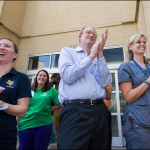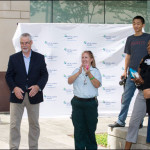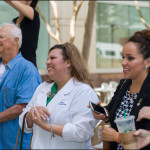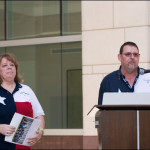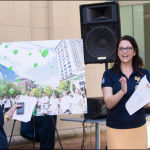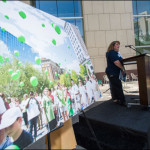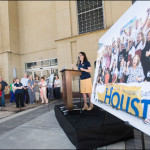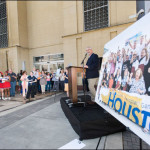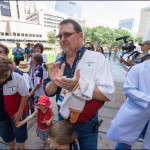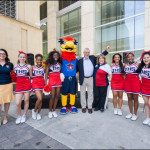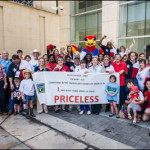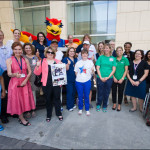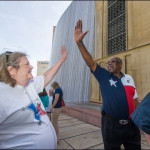
On the 12th floor of West Tower, in an eight-bed rehabilitation unit, the rehab team including therapists, nurses, neuropsychologists, child life specialists and physicians, are helping children relearn how to do those things that we all take for granted; walk, talk, stand, eat, bathe and play. It’s the daily tasks that they once knew well but after being impacted by a disease or accident, these children must relearn the basics. Just two years after opening its doors, the unit has seen 262 patients many who, with intensive rehabilitation, progressed from little or no functional independence to actively participating in their lives outside of the hospital walls.
Watch a short video explaining why we opened the unit in May of 2012
Now, the unit is celebrating a major milestone after receiving the highest level of accreditation from the Commission on Accreditation of Rehabilitation Facilities (CARF). It is the only pediatric inpatient rehabilitation facility in the state of Texas and one of only 31 worldwide with this level of accreditation. CARF international is an independent, nonprofit accreditor of health and human services.
“We built this unit with the understanding that we wanted to be leaders in the pediatric rehabilitation community and we wanted to lead in the nation,” said Dr. Christian Niedzweicki, medical director of inpatient rehabilitation. “We wanted to be a center of national prominence and CARF is the gold standard.”
The CARF accreditation means the rehab program has demonstrated significant conformance with at least 1,500 standards signifying quality care for children with multiple disabilities in the inpatient rehab setting. The CARF accreditation survey team who conducted the survey interviewed physicians, nurses, therapists, patients and patient families as well as system-wide organizational representatives to determine the level of care and service that was being provided.. Accreditation is predicated at least in part on how well the rehab program addresses the individual needs of the patients and families. Texas Children’s inpatient rehabilitation team creates an individualized and family centered plan of care for each patient based on their needs and levels of disability and ability. The rehab team sets daily, weekly and discharge goals unique to each child and their levels of progress. The child’s every activity from waking up in the morning and brushing their teeth, eating breakfast, attending therapy sessions, school, playing and each step until bedtime is dedicated to their recovery.
“Our team is passionate and dedicated to helping each child and their family achieve the best possible outcome,” said Shelley Ellison, director of physical medicine and rehabilitation. The team members, including the patients and their families, work collaboratively to achieve the identified goals throughout the day and night through hands-on intervention as well as ongoing progressive education to patients, families and others.
The program’s newest recognition is just the beginning of an on-going process of continuous performance and quality improvement. Niedzwecki said most programs don’t attempt accreditation until they’ve been open for at least five years. The Texas Children’s Hospital rehab unit submitted their letter of intent to be surveyed for accreditation at just 18 months. The rehab team works collaboratively to embrace the culture of ongoing improvement while striving to be the best in the country.
“We will continue to constantly reassess the input from our patients and their families to continue improvement,” said Niedzwecki. “This accreditation means we are doing what is right for the patient and are now recognized by an international accrediting organization that helps us become a leader in the field.”
Niedzwecki and Ellison both emphasize the commitment of the entire IRU team and numerous others across the organization that made this major accomplishment a possibility.



 “It was great to see their fearlessness,” said Dr. Shannon Dicarlo, a pediatric neurology physician and former fellow at Texas Children’s. “They didn’t let their epilepsy get in the way of going about their lives, making friends, and having fun.”
“It was great to see their fearlessness,” said Dr. Shannon Dicarlo, a pediatric neurology physician and former fellow at Texas Children’s. “They didn’t let their epilepsy get in the way of going about their lives, making friends, and having fun.”









